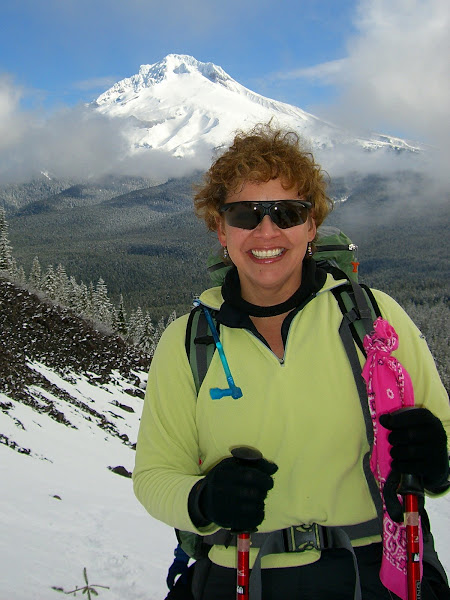


After the Mt. Hood climb, it was time to get back to work. Except for a 10-day trip to Alaska for some sightseeing and short day hikes in the Yukon with new friends, boots were not to be part of my wardrobe for the next several months. Work was given top priority, and my computer, sadly, even found its way into my backpack on the Alaska trip. As weak justification, the HP might have shielded my back from having a chunk of flesh ripped out of it by a mama bear protective of her cub. Fortunately, there was only a sighting, not an encounter.
I needed a new goal, and Kilimanjaro had been rattling around in the back of my mind for some time, planted there by my longtime friend Gary. I had used Mt. Hood as an introduction to mountaineering, and now turned my full attention to the summit of Kilimanjaro. While there is the obvious difference in elevation between the two mountains (Mt. Hood: 11,239' vs. Kilimanjaro: 19,340'), Mt. Hood is considered a technical climb (ice axe, crampons, rope) and Kilimanjaro is not. If a person is reasonably conditioned for eight days of hiking, Kilimanjaro's biggest challenge is altitude. That being said, there is some interesting reading on the Web about this. Too much information, if you ask me, such as this description which makes Kilimanjaro sound like something wagered on in Vegas:
How dangerous is Kilimanjaro?
Kilimanjaro is probably one of the most dangerous things you will ever to. It is certainly one of the most dangerous things that you can pay to do.
We estimate that during times of bad weather, climbers with cowboy operators run a risk of death higher than 1 in 300.
During normal weather conditions, climbers with cowboy operators run a risk of death higher than 1 in 3000.
On the other hand, during normal weather conditions, climbers with reliable operators run a risk of death less than 1 in 10000.
To date our climb operation guided more than 15000 people on Kilimanjaro and we have had only one death, which was a man of senior years who suffered a sudden heart attack near to the summit.
The main issue on the mountain is altitude sickness. Kilimanjaro is seriously high. No other trekking below 5000m altitude can prepare you for this.
Almost all climbers suffer some form of mild to medium altitude sickness. Approximately 15% suffer symptoms severe enough to warrant their immediate removal to lower altitudes. Up to 1 in 100 of all climbers require emergency evacuation.
If you do get severe symptoms and your climb leader is not fully competent in dealing with the onset of altitude sickness, then you will die.
I hate it when they sugar coat things. But, I digress.
After spending hours viewing tour operator websites and talking to people who have made the climb, I selected Wilderness Travel to handle my trip of a lifetime. If you have never seen their free coffee-table-quality catalog of adventures, call them and order one, then get ready to start hemorrhaging money, as my uncle would say.
I found my way back to the trail in early 2008 as a volunteer with the American Lung Association's Reach the Summit (RTS) program, the group I climbed Mt. Hood with. As an assistant hike leader, I helped out with weekend conditioning hikes for the new program participants. It was after one such hike that our group was at Edgefield in Gresham for a post-hike beverage, and two of my fellow hiking friends, Joe and Beth, started asking me questions about the Kilimanjaro trip. By their second Bloody Mary, their questions had turned into more than curiosity. This was encouraging. Beth and I were on the same rope when we climbed Mt. Hood, and Joe was one of the hike leaders that conditioned our team when Beth and I climbed. Fast forward: It will be Iwalani, Joe and Beth going to Africa. Yeah!
All three of us, together and separately, put in lots of time on the trail last year. When the RTS training season ended, we made additional hikes and climbs of our own. Joe had a successful climb on Mt. Shasta, and together he and Beth climbed Mt. Whitney. My big hikes were closer to home, seeing the summit of South Sister and Mount St. Helens crater rim, both times with my loyal hiking partner David.


And now we continue our conditioning hikes, getting out in rain, snow, sleet and shine for the few weeks we have left before Kilimanjaro. If only we could condition ourselves for the altitude.






No comments:
Post a Comment